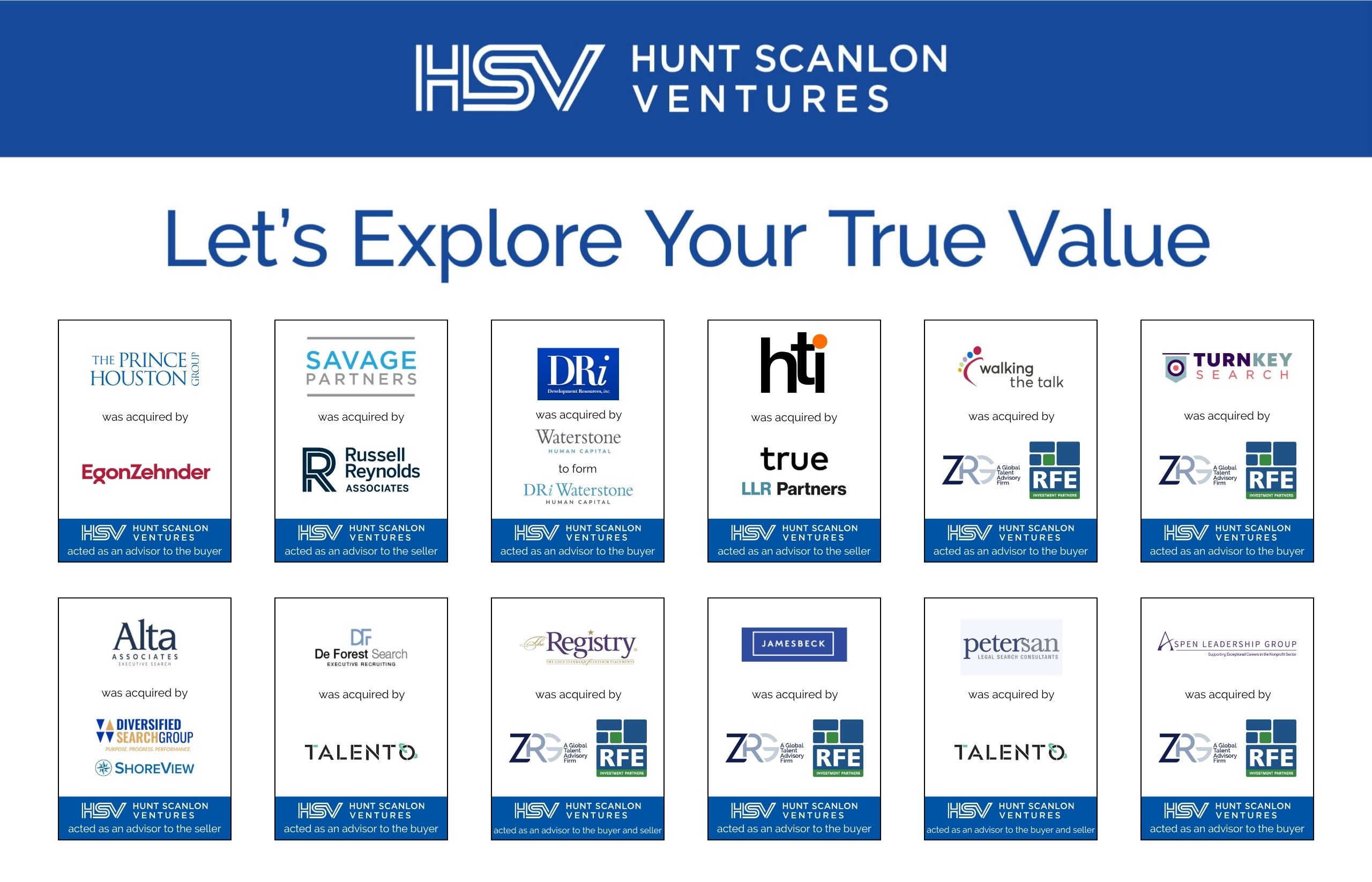U.S. M&A activity is accelerating, with July delivering one of the sharpest jumps in deal value in recent years. The latest EY Merger Monthly highlights a market where boards are favoring fewer but larger deals, driven by confidence in the economy, stable capital markets, and growing adoption of AI. Leo Cummings, an associate at Hunt Scanlon Ventures, unpacks the key findings and their implications for leadership and executive search.
The U.S. mergers and acquisitions market has entered a new phase. Instead of chasing volume, companies are prioritizing scale and transformational consolidation.
This pivot has been fueled by steady capital markets, stable interest rates, and expectations of a more favorable policy environment in the years ahead.
In its latest Merger Monthly, EY reported that “the value of deals more than $100m soared 91.7% compared with July 2024, even though the number of $100m+ deals showed a decrease of 21.9%.”
That divergence signals a market tilting toward megadeals, as boards concentrate their resources on fewer, higher-stakes transactions.
Confidence is also being driven by sector dynamics. Strategic consolidation, AI-led acquisitions, and healthcare innovation are shaping deal pipelines, while infrastructure expansion continues to attract capital.
These trends are setting the stage for a more selective, but more ambitious, M&A landscape.
Bigger Deals, Fewer Transactions
EY notes that despite fewer transactions in July, total deal value surged as companies doubled down on larger transactions. Deals worth more than $100 million soared almost 92% from a year earlier. Stable markets and growing economic confidence provided the foundation for these bold bets.
This trend marks a decisive shift toward scale. Boards are targeting fewer but much larger deals to secure growth, efficiency, and competitive advantage.
Talent Implication
“Bigger deals compress timelines and raise the stakes for leadership,” said Leo Cummings, an associate at Hunt Scanlon Ventures. “Executives must integrate quickly, communicate clearly, and deliver results at scale.”
“Search firms must recalibrate sourcing strategies to mirror these sectoral hot spots.”
For recruiters, he said, this means a sharper focus on finding proven integrators who can handle high-stakes transformations without losing momentum.
Sector Shifts Reshape Priorities
The aerospace and defense sector led July activity with eight deals totaling $90.5 billion, up from just $11.2 billion a year earlier. Technology followed with $54.9 billion in transactions, more than doubling year-over-year, while life sciences grew to $34 billion. Oil and gas, by contrast, slipped slightly.
EY attributes this to a mix of national security priorities, digital transformation, and healthcare innovation. Each sector is using M&A as a lever to reposition for long-term growth.
Talent Implication
“These sector spikes are signaling where leadership pipelines must expand,” Mr. Cummings explained. “Defense and aerospace require executives with government, security, and infrastructure expertise. In tech, digital transformation demands leaders who understand both AI innovation and operational execution.”
Search firms, he said, must recalibrate sourcing strategies to mirror these sectoral hot spots.
Private Equity Slows, Corporates Step Forward
Private equity activity cooled in July. EY reports overall deal value dropped by about 41% even as volume rose slightly. Corporates filled the gap, leaning on M&A to achieve resilience, pursue bolt-ons, and expand portfolios.
This reflects a cautious private equity market still weighing tariff impacts and valuation concerns, while corporates leverage strategic clarity and stable financing conditions.
Talent Implication
“Corporates are taking the lead in using M&A as a resilience strategy,” said Mr. Cummings. “That means CFOs, CHROs, and integration leaders are more important than ever — the people who can stabilize and optimize operations after a large transaction.”
“Sector spikes are signaling where leadership pipelines must expand.”
For private equity, the emphasis shifts toward operational executives who can drive efficiency and protect portfolio performance.
Policy and Outlook for 2025
The recently enacted “One Big Beautiful Bill Act” is expected to create a more favorable tax environment for deals, particularly in energy, financial services, and manufacturing. EY notes that M&A is entering a phase marked by fewer but larger transactions, as boards pursue clarity and scale.
The report also points to new policy on 401(k) investment access to alternatives, which could open a long-term growth channel for private equity fundraising, though implementation is expected to be slow.
Talent Implication
“As the market tilts toward megadeals and policy clarity takes hold, leadership requirements are going to rise dramatically,” said Mr. Cummings. “Boards will expect executives who can navigate regulatory complexity, deliver growth across borders, and manage scrutiny from both investors and policymakers.”
Article By

Leo Cummings
Leo Cummings is Editor-in-Chief of ExitUp, the investment blog from Hunt Scanlon Ventures designed for professionals across the human capital M&A sector. Leo serves as an Associate for Hunt Scanlon Ventures, providing robust industry research to support the firm’s investment group.






